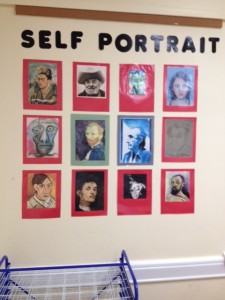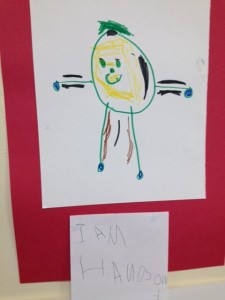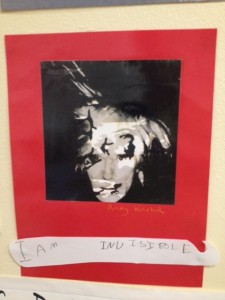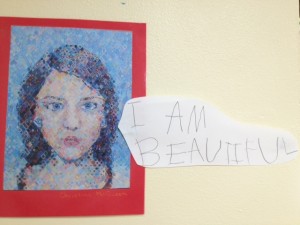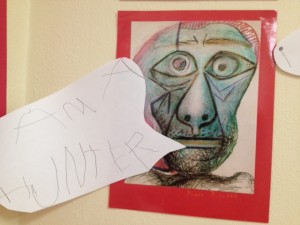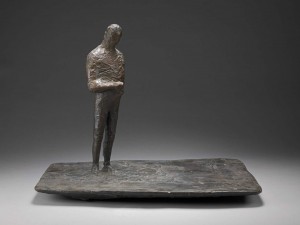The “getting to know you” theme that many teachers engage in at the start of the school year is a natural place to introduce the idea of “self-portrait”. Sylvia, my co-teacher, and I created a display of a dozen self-portraits which show a range of artistic expression for our five year old students to peruse during the first few days of school. Frida Kahlo, Ansel Adams, Pablo Picasso, and Georgia O’keeffe were among those displayed.
After the children discussed their observations of the portraits and we recorded them on chart paper, we invited our students to create their own self-portraits. Once they were complete, we had them write a sentence starting with “I am…” and we posted their thoughts with their portraits. This period of self-reflection was wonderful.
Once this was finished, we thought it would be an excellent lesson to have the children study the faces on the professionally rendered portraits, and decide what the artists would say if they wrote “I am….” sentences. Each child really studied the portraits, looked into the eyes of the artists, and came up with some interesting responses.
I loved noting the time that each child spent, really studying and thinking about each portrait before writing his/her idea. Overall, it was a meaningful way to get to know each other better.
